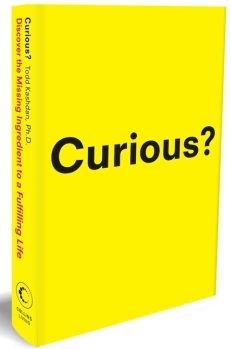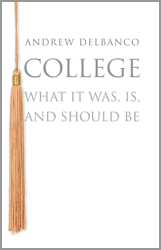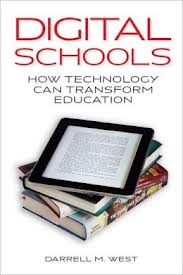 Professor Susan Engel remembers growing up. She recalls small details. Not only did she eat bugs, she remembers when and where, and which bugs she ate (potato bugs). As a pre-schooler, she remembers watching TV while sitting under the ironing board, comfortably asking all sorts of questions of Nonna, who was ironing the family’s clothes above her. In a one-room school house, Mrs. Grubb’s imbalanced approach to curiosity and education began a lifetime of inquiry. One of Professor Engel’s works-in-progress is a evaluative measure for curiosity, which seems consistent with the way most people think about school in the 21st century, and, to me, wildly counterintuitive.
Professor Susan Engel remembers growing up. She recalls small details. Not only did she eat bugs, she remembers when and where, and which bugs she ate (potato bugs). As a pre-schooler, she remembers watching TV while sitting under the ironing board, comfortably asking all sorts of questions of Nonna, who was ironing the family’s clothes above her. In a one-room school house, Mrs. Grubb’s imbalanced approach to curiosity and education began a lifetime of inquiry. One of Professor Engel’s works-in-progress is a evaluative measure for curiosity, which seems consistent with the way most people think about school in the 21st century, and, to me, wildly counterintuitive.
The right book tends to find me at precisely the right time. That’s what happened yesterday when I started The Hungry Mind: The Origins of Curiosity in Childhood. It’s fair to say that I devoured it in a single weekend.
In my studies and writing about creativity, curiosity has always been an underground river. I can hear it and sense it, but it’s difficult to see. Curiosity differs with each person and their current motivation, and with every situation. It also tends to vary in duration and intensity depending upon personal interest at the moment, and available information.
Curiosity behaviors are familiar, easy to recognize: “We pick up objects to look at them more closely, peel things open and take them apart, ask other people questions, read books, do experiments, and wander into unfamiliar situations.”
Some people are more likely to do this than others.
“The quality of a child’s attachment has a powerful influence on the vigor and depth of her exploration of the world around her.” When a child is insecure or uncertain about their bond with mom, he or she is less likely to “make physical and psychological expeditions to gather information.” As the book unfolds, this becomes one of its most important ideas. In lower-income, and/or lower-education households, parents tend to provide specific operating instructions for life (“put that down,” “come to the table,” “not now,” “leave the dog alone”), but parents in households less troubled with economic issues often encourage and entertain open questions, theoretical ideas, and forms of play. Reading and storytelling may have little to do with the practical. Open-minded freedom builds self-confidence, resilience, and curiosity. (Not so sure? This is a 200 page book extensive references to past work by serious scholars).
Unfortunately, curiosity is very difficult to define and even harder to measure. (Not that learning is easy to measure, unless it’s wrapped in the short-term evaluative tools that structure contemporary education.)
This 2015 book pays less attention to mobile devices and the internet and social media than I do. A Second Edition would be wonderful, especially if Professor Engel expands the book to connect these innovations to curiosity and personalized learning.
Returning to economic advantage and curiosity, “children growing up in poverty hear far fewer total number of words, have a harder time learning to read, and ultimately are less likely to do well in school by the time they are in third grade…” Professor Engel goes on, “if a child lives with parents who only use words to manage practical tasks, he may struggle to use language for less practical, more contemplative purposes.” In turn, this affects the ability of children to formulate and ask good questions, which is a very important way to express curiosity and learn about the world and one’s place in it.
Focus not on the school experience, because that’s only part of child’s experience. Instead, focus on what children hear adults say and see adults do. Early on, children overtly mimic. Grown adults mimic too… following a parent or aunt or uncle’s path as a result of a gift or what seemed to be an inconsequential conversation at the time. I just found a book about world cultures that my aunt and uncle gave me when I was nine years old. I remember reading the book dozens of times. Many decades later, it’s clear that the book shaped my current professional activities in global education. I did not learn much of this in school, or in any formal setting. It was my own curiosity that shaped these ideas, and continues to shape them today.
School simply isn’t the place to nurture curiosity. There’s just too much other stuff to do. There is constant pressure to prepare the students for the upcoming test, to complete the project on schedule, to score the grades necessary for advancement. Distractions–which are essential to curiosity and exploration–are deeply discouraged. Inquisitive students must be not derail the classroom conversation, however interesting and significant their questions may be.
Is curiosity the opposite of education?
The good Professor doesn’t take the argument this far, but she sometimes comes close. Borrowing some of her own thinking and adding it to my own… Curiosity is intuitive, fluid, wide, deep, driven by interest, exceedingly difficult to measure, and essentially unrestricted by time and space. Education is defined by curriculum experts and highly structured. It is highly structured to make efficient use of time and space, and adheres to a strict timetable measured by 45 minute intervals, weeks of achievement, school years and grade levels. Education cannot run too deep or too wide because there are so many items that must be taught to so many people. Education is driven by rules, not student interest (for some, this changes in higher education). Measurement of short-term impact can be done, but the longer the period of measurement, the more variables complicate the results.
Traditional coursework on The Civil War takes students through causes (difficult to understand without lots of broader context), Lincoln, Gettysburg Address, Emancipation Proclamation, John Wilkes Booth, funeral cortege, and the dull political history of Andrew Johnson and reconstruction. Lots of education happening here, but the sheer volume of information smothers any attempt at global context or personal investigation of related stories. The story is just too complicated for education. It’s better suited to the uneven and long-term learning that curiosity can provide.
A student guided by curiosity might begin with the failure of tobacco as the South’s cash crop, its replacement with cotton and big cotton’s reliance upon the slave trade. Follow that line and you’ll bump into the enormous economic leap made possible by the cotton gin. Then, it’s off to England where Manchester’s mills make a fortune with cheap cotton from American slaves. When that supply is threatened by events leading up to the Civil War, the British look to India for an alternative cotton source, amplifying the growth and power of the British Empire. India becomes a glorious distraction–stunning history, spectacular music, art, dance, religion, food. Later, a fight for independence with Gandhi and nonviolent protest as a new way of thinking that informs US student protests to help end the Vietnam War, and Martin Luther King, Jr. to challenge authority in very productive ways. Back to Manchester for its rivalry with nearby Liverpool; follow that line to the economic and social conditions that breed The Beatles and change popular music and culture (including George Harrison’s encounters with Indian music, and so on).
I know we don’t teach that way, but I know I learn that way.
As I understand more about how we teach, and how we learn, there may be more to eating bugs than there is to textbooks.

 Driving the rural roads of Scotland, Ireland, and Wales, I’ve occasionally been fortunate enough to be blocked by sheep being moved from one pasture to another.
Driving the rural roads of Scotland, Ireland, and Wales, I’ve occasionally been fortunate enough to be blocked by sheep being moved from one pasture to another. Here’s a question: Why are one-size-fits-all performance standards inappropriate to the point of silliness when applied to dogs, but accepted without question when applied to kids? If someone tried to set up a national program to teach every dog to do everything that various breeds are able to do, the Humane Society and the American Society for the Prevention of Cruelty to Animals would have them in court in a New York minute. But when authorities mandate one-size-fits-all performance standards for kids, and the standards aren’t met, it’s the kids and teachers, not the standards, that get blamed.
Here’s a question: Why are one-size-fits-all performance standards inappropriate to the point of silliness when applied to dogs, but accepted without question when applied to kids? If someone tried to set up a national program to teach every dog to do everything that various breeds are able to do, the Humane Society and the American Society for the Prevention of Cruelty to Animals would have them in court in a New York minute. But when authorities mandate one-size-fits-all performance standards for kids, and the standards aren’t met, it’s the kids and teachers, not the standards, that get blamed. So what are we supposed to do about this? How are we supposed to think about 2025? Some of the answers are in a report prepared by the
So what are we supposed to do about this? How are we supposed to think about 2025? Some of the answers are in a report prepared by the 











